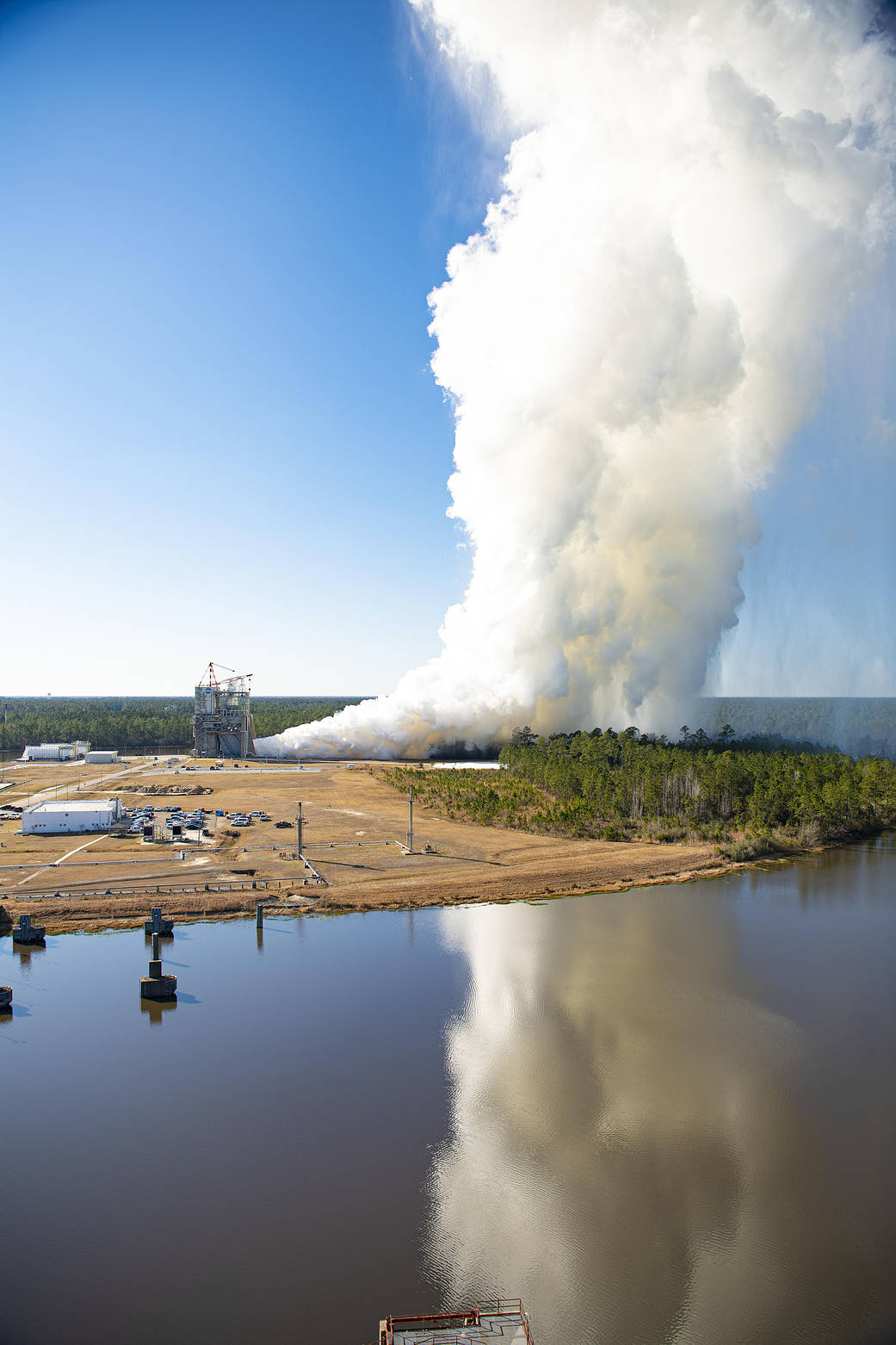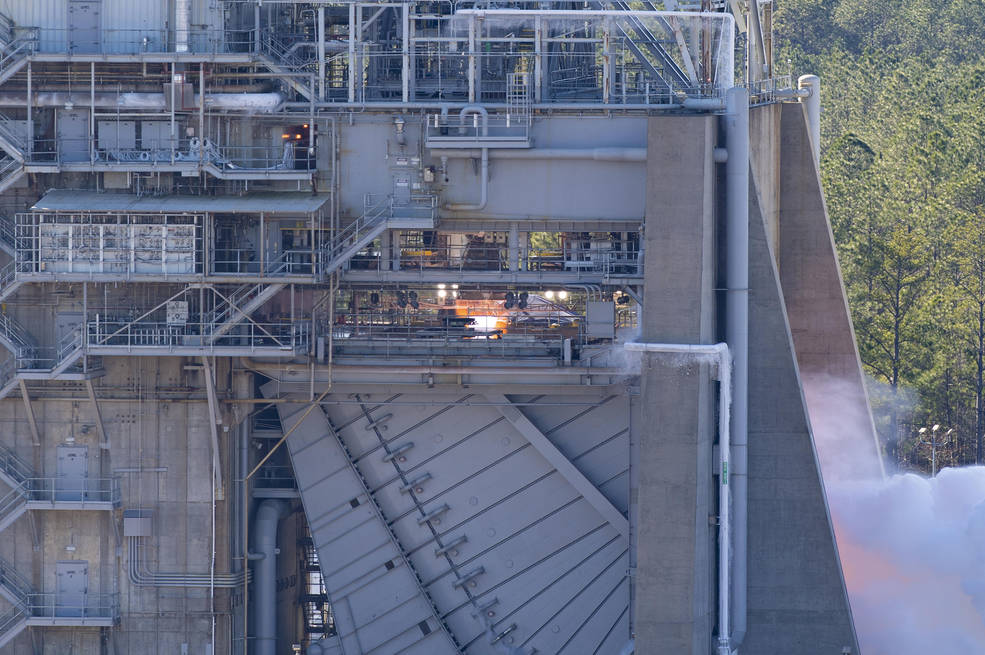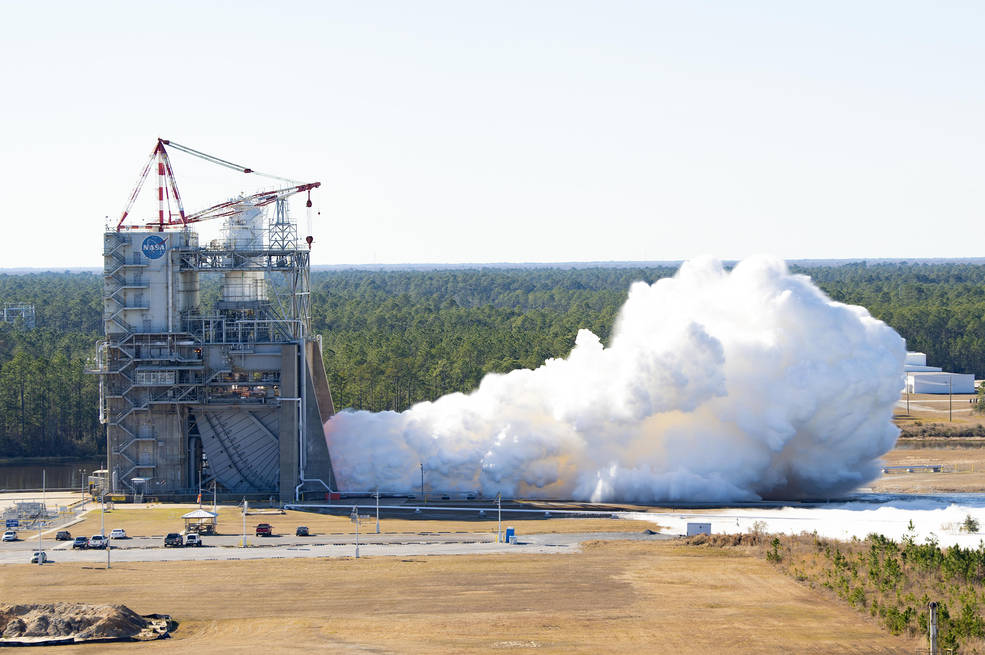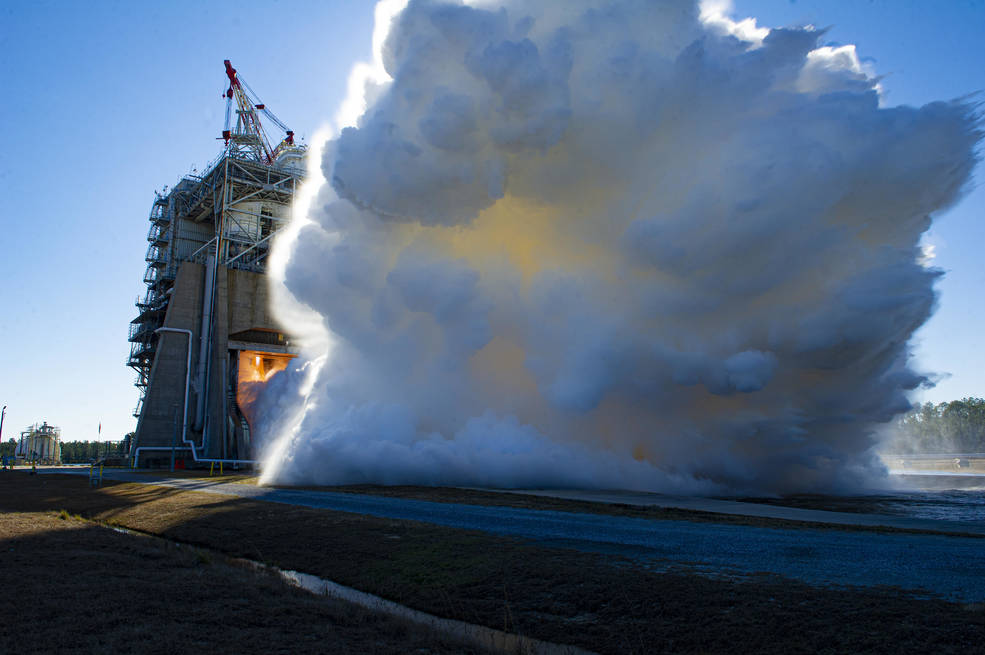
NASA conducted its second RS-25 engine hot fire test of the new year Feb. 8 on the Fred Haise Test Stand at Stennis Space Center near Bay St. Louis, Mississippi. The test was the third hot fire in the latest test series that began in mid-December. NASA is testing RS-25 engines to help power the agency’s Space Launch System (SLS) rocket on future deep-space missions. Four RS-25 engines will generate a combined 2 million pounds of thrust to power SLS’s ascent. Each test in the current series is providing valuable operational data to NASA’s lead contractor, Aerojet Rocketdyne, on a variety of new components manufactured with state-of-the-art fabrication techniques as the company begins production of new RS-25 engines. The RS-25 engines for the first four SLS flights are upgraded space shuttle main engines and have completed certification testing. NASA will use the data from the current test series to enhance production of new RS-25 engines and components for use on subsequent SLS missions. The testing is part of NASA’s and Aerojet Rocketdyne’s effort to use advanced manufacturing methods to significantly reduce the cost and time needed to build new engines. For the Feb. 3 test, engineers fired the RS-25 developmental engine for a full duration of about eight-and-a-half minutes (500 seconds), the same amount of time the engines must operate to help send SLS to space. Operators also fired the engine up to 111% of its original power level, the same level needed during SLS launch. SLS will be the world’s most powerful rocket and the only one capable of sending the agency’s Orion spacecraft, astronauts, and supplies to the Moon in a single mission. Initial SLS missions will send Orion to the Moon as part of NASA’s Artemis program, including the Artemis I uncrewed test flight this year that will pave the way for future flights with astronauts to explore the lunar surface and prepare for missions to Mars. Artemis missions also will land the first woman and first person of color on the lunar surface. SLS and Orion, along with the commercial human landing system and the Gateway outpost in orbit around the Moon, are NASA’s backbone for deep space exploration. RS-25 tests at Stennis are conducted by a combined team of NASA, Aerojet Rocketdyne, and Syncom Space Services operators. Syncom Space Services is the prime contractor for Stennis facilities and operations.




























